12 Most Sought After and Expensive Louis XIV Furniture Pieces
Louis XIV furniture pieces are the epitome of elegance, combining intricate designs with fine craftsmanship. These stunning pieces reflect the grandeur of the French Baroque period, which remains highly desirable in the world of antique collecting. Due to their rarity and exceptional detail, certain Louis XIV pieces have become some of the most expensive in the market. If you are looking to add some historical luxury to your collection, understanding which pieces are the most valuable is key. Let us take a closer look at the most sought-after Louis XIV furniture items.
This post may contain affiliate links, which helps keep this content free. Please read our disclosure for more info.
Louis XIV Bombe Chest
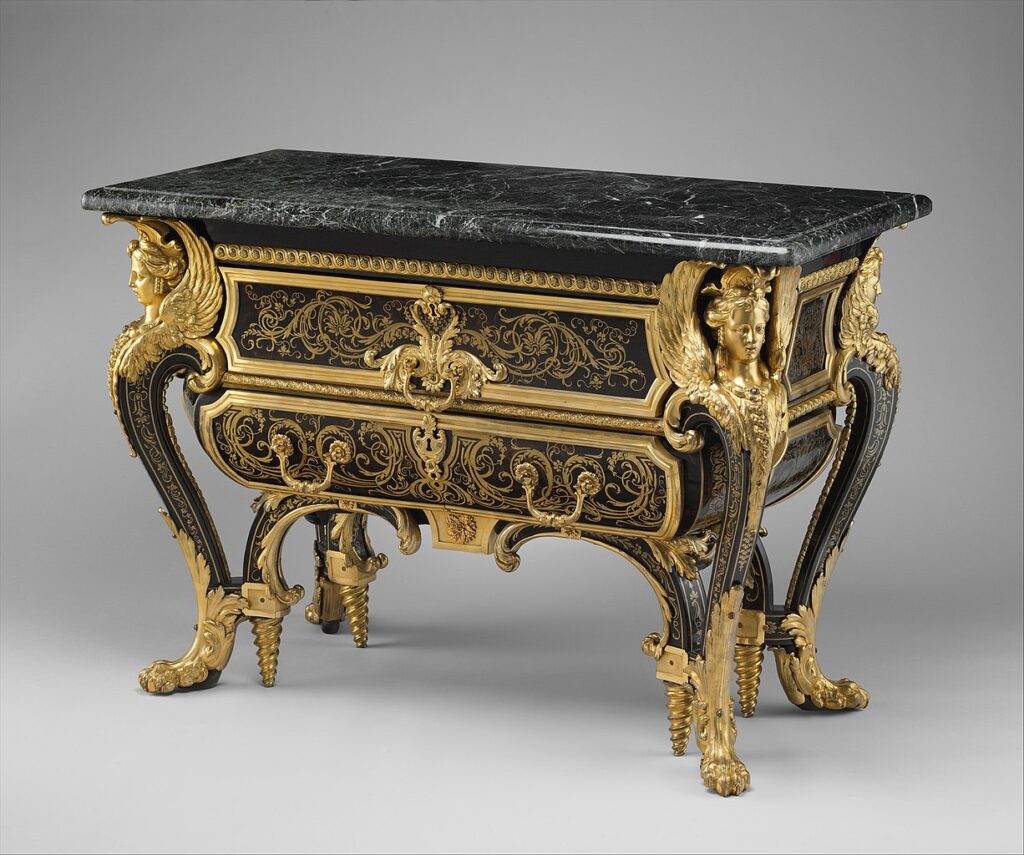
The Louis XIV Bombe Chest was created around 1690 and is known for its distinctive curvaceous shape and intricate detailing. These chests were often made with luxurious materials, such as walnut or oak, and decorated with gold leaf or lacquer. Its most notable feature is the curved, outward-facing design, making it stand out in any room. Due to its craftsmanship and rarity, a Bombe Chest can fetch anywhere between $40,000 and $150,000, depending on its condition and provenance.
The chest is prized for its elegant appearance and was often used in royal households to store fine garments and treasures. Many of these pieces are adorned with elaborate floral carvings and hand-painted lacquer, showcasing the intricate artistry of the period. This exquisite craftsmanship contributes to its high value. When properly restored and preserved, the Louis XIV Bombe Chest remains one of the most expensive and highly sought-after pieces of furniture from the era.
Louis XIV Writing Desk
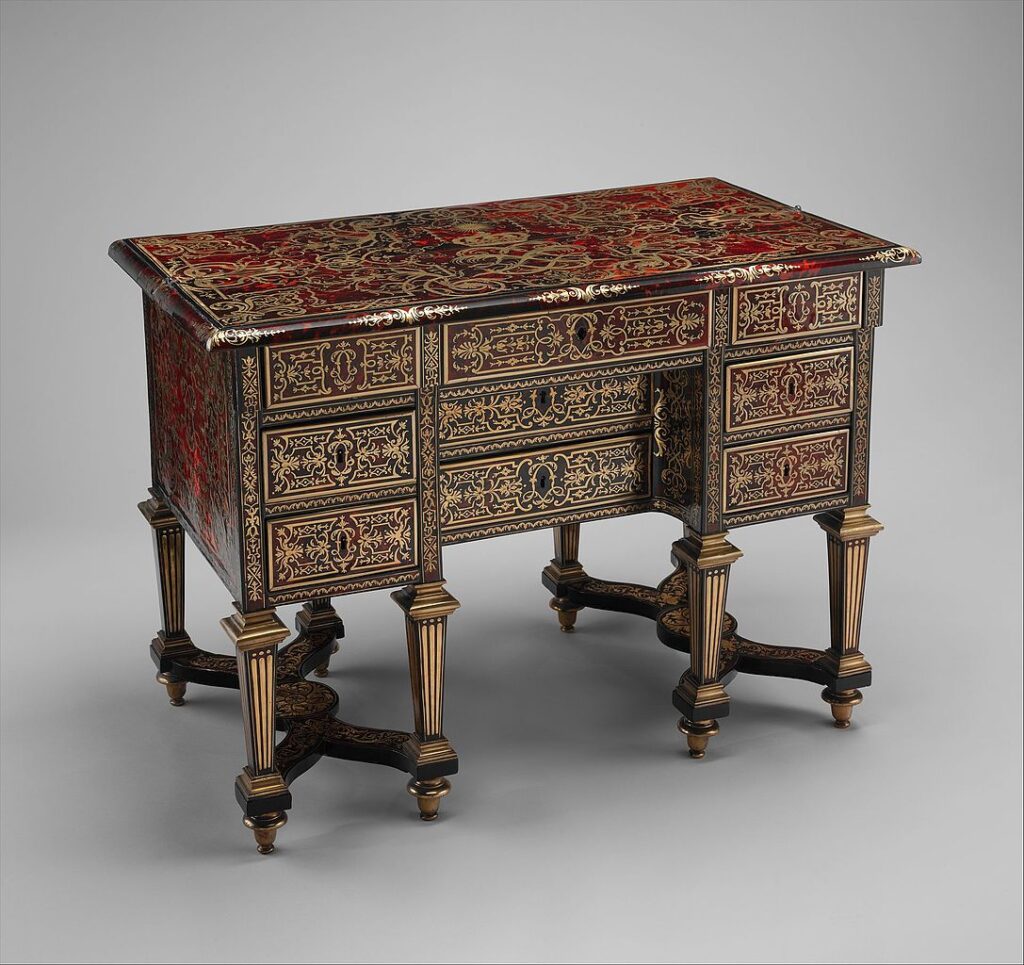
The Louis XIV Writing Desk, created in the late 1600s, is another iconic piece that represents the grandeur of the French monarchy. This desk is typically made of richly veneered wood with brass inlays and detailed carvings, offering both function and beauty. Its most striking feature is the intricate marquetry and the elegant design of the legs, often shaped to evoke classical Roman influence. Depending on the quality and craftsmanship, its market value can range from $50,000 to $200,000.
A writing desk of this era was not only a practical piece of furniture but also a symbol of power and influence. These desks were often commissioned by aristocracy for use in royal offices, making them rare and highly valuable today. The combination of craftsmanship, luxurious materials, and historical significance is what makes these desks so expensive. They remain a coveted item for collectors who appreciate fine antique furniture.
Louis XIV Armchair
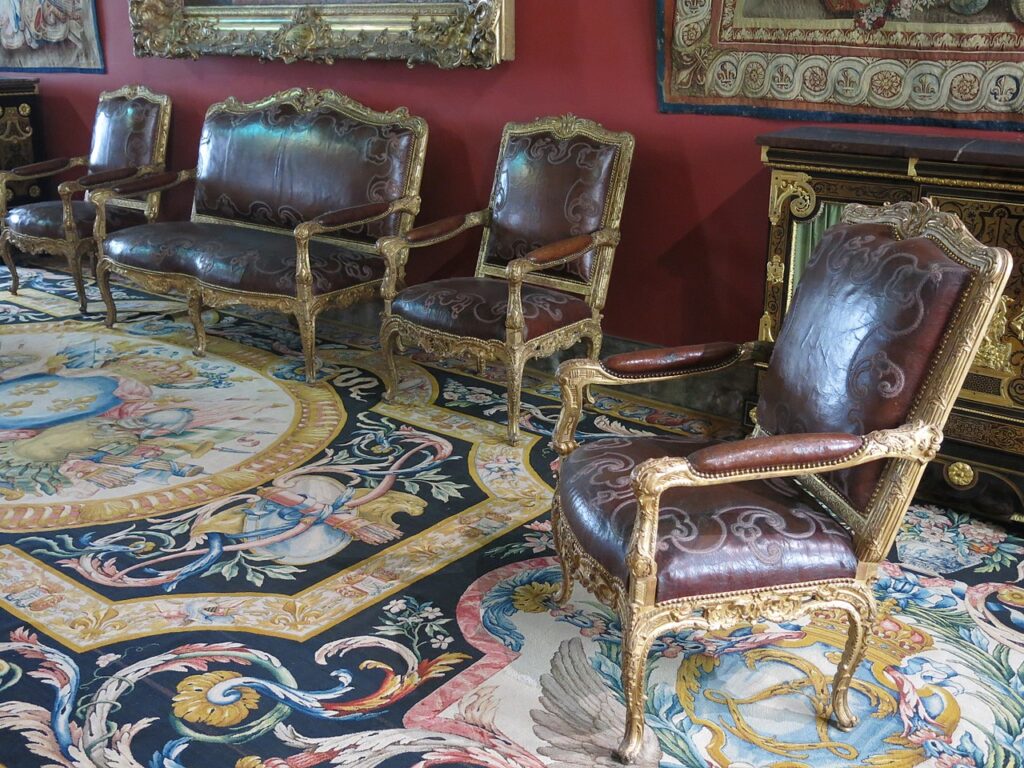
Created in the 1670s, the Louis XIV Armchair is a prime example of French Baroque furniture, with a sturdy wooden frame often adorned with gold leaf and velvet upholstery. The armrests, back, and legs are typically carved with intricate designs, depicting floral patterns or mythological figures. Its best feature is the sculptural carvings that highlight the artistry of the period, along with the luxurious upholstery. A well-preserved armchair from this period can be valued at $25,000 to $80,000, with some rare examples reaching even higher prices.
The armchair was a piece of royal furniture and often found in royal salons and offices during Louis XIV’s reign. The use of high-quality materials and craftsmanship makes it a highly desirable item for collectors today. Due to its elaborate design and historical significance, this armchair commands high prices at auctions. Restored examples in excellent condition are particularly valuable.
Louis XIV Console Table
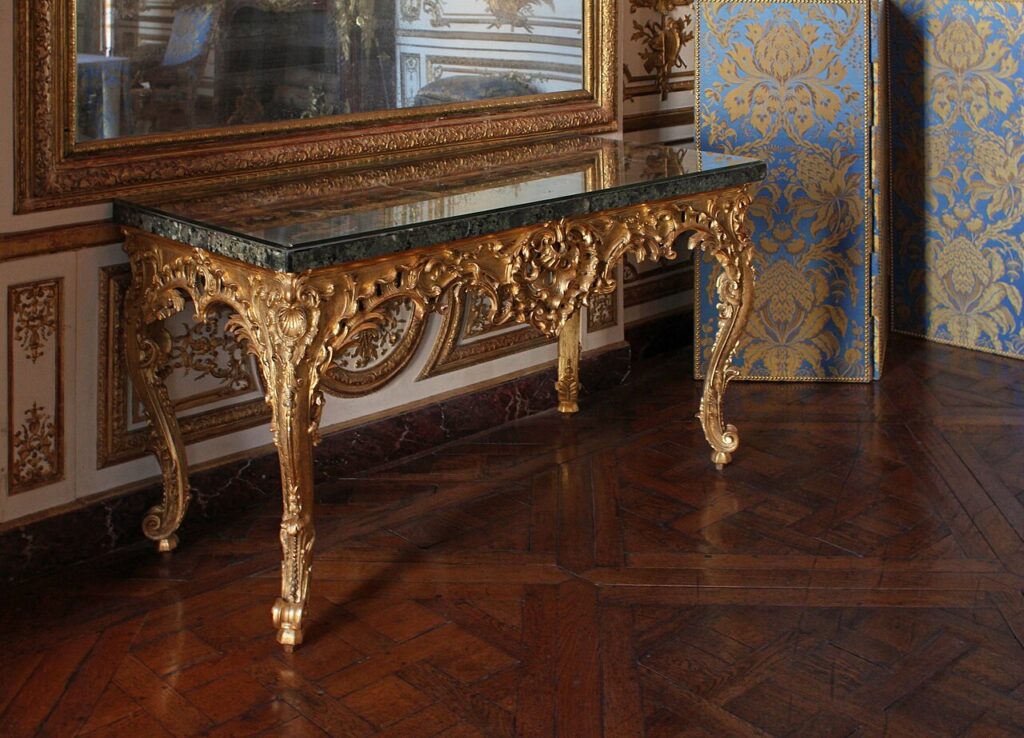
The Louis XIV Console Table, crafted around 1700, is a highly decorative and functional piece, often made of dark wood with gold or bronze accents. These tables were designed to stand against walls and were often used to display fine sculptures or other treasures. The most notable feature of these tables is the intricate detailing of the carvings on the legs and edges, often reflecting mythological or natural themes. Market value for a console table can vary from $30,000 to $120,000, depending on its condition and authenticity.
Console tables from this period are highly sought after due to their impressive size and ornate design. They were often commissioned by the French aristocracy to add grandeur to their palaces. The combination of fine materials like marble or gilded bronze with the woodwork makes these tables particularly expensive. Today, they remain a staple piece for collectors looking for rare and exceptional Louis XIV furniture.
Louis XIV Canopy Bed
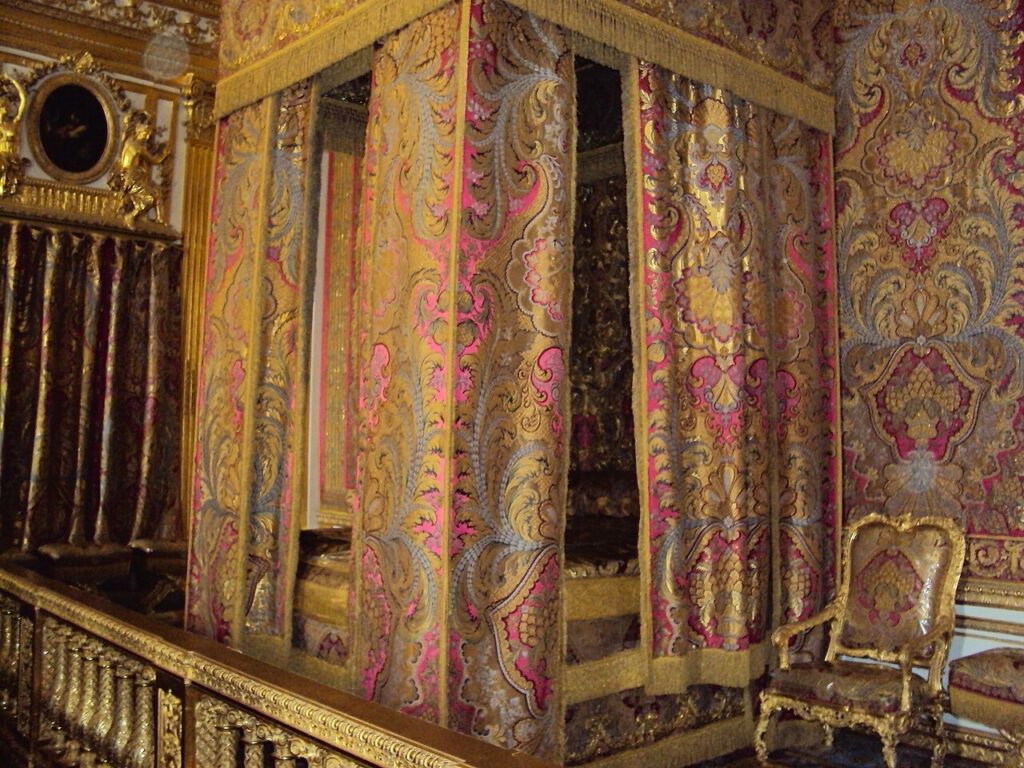
The Louis XIV Canopy Bed, dating back to the late 17th century, is one of the most luxurious and expensive pieces of furniture ever created. These beds were often made of carved wood and featured elaborate silk or velvet curtains and bedding. The standout feature of these beds is the carved wood posts and canopy, which were often intricately detailed with floral and geometric motifs. A well-preserved canopy bed can be valued anywhere from $100,000 to $500,000, depending on the craftsmanship and materials used.
These beds were typically reserved for royalty and aristocrats, adding to their exclusivity and value. The materials used, such as gilded wood and rich fabrics, contributed to their immense cost. Canopy beds were not just functional but also symbolic of wealth and status, making them highly sought after by collectors. Restoration of these beds can significantly increase their market value.
Louis XIV Dining Table
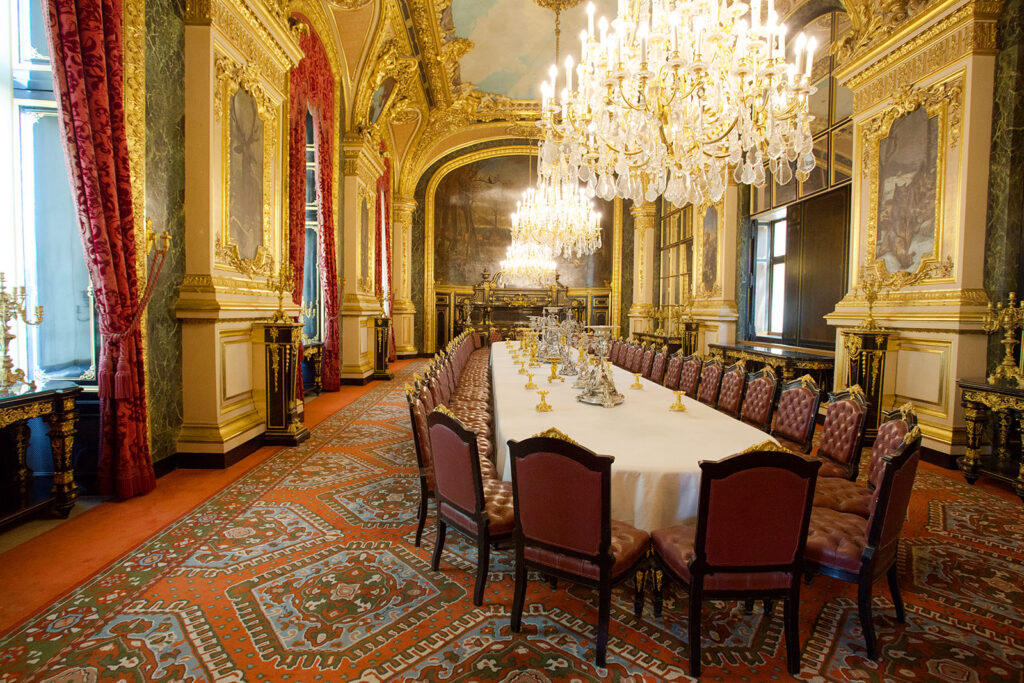
The Louis XIV Dining Table, crafted in the late 1600s, is a magnificent piece that reflects the grandeur of royal French dining rooms. Made of heavy, richly veneered wood, the table typically features ornate carvings and a polished, glossy surface. Its most prominent feature is the intricate leg design, often made to resemble lion paws or classical figures. Depending on size, condition, and craftsmanship, these dining tables can fetch between $75,000 and $250,000.
Dining tables from this era were designed for use in royal palaces and grand estates, often accommodating large, luxurious gatherings. The elaborate carving and fine woodwork make these tables highly sought after by collectors. Their high price is often due to the labor-intensive crafting process and the use of rare woods. A table in excellent condition with original detailing is particularly valuable.
Louis XIV Armoire
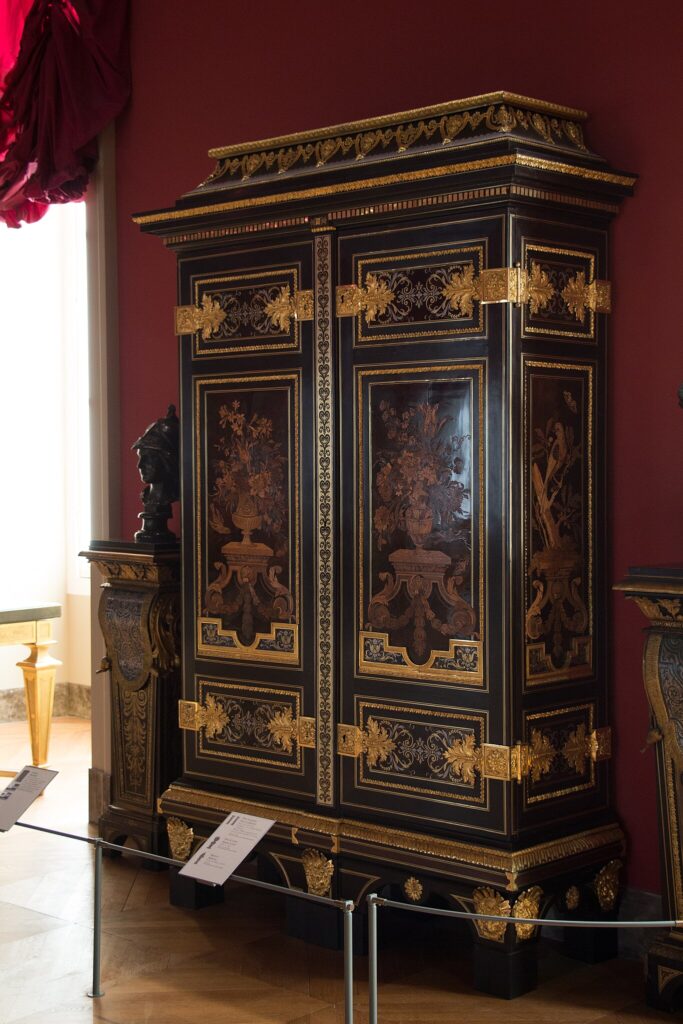
The Louis XIV Armoire, produced around 1695, is a tall, elegant storage piece that features detailed carvings and a classic, symmetrical design. Often made of oak or walnut, these armoires were used in royal homes to store clothing and valuables. The most notable feature is the intricate woodwork, which can include floral motifs or detailed panels. Depending on the condition and rarity, a Louis XIV armoire can range in price from $50,000 to $200,000.
These armoires were symbols of wealth and status, designed to store fine linens and important family heirlooms. Their massive size and intricate design make them stand out in any room. The craftsmanship involved in creating these armoires contributed to their high value. Fully restored examples of these pieces often reach the higher end of the price spectrum.
Louis XIV Ormolu Clock
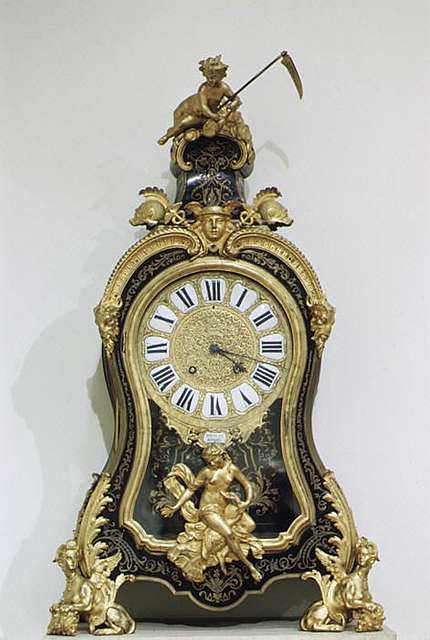
The Louis XIV Ormolu Clock, created around 1700, is a stunning example of French decorative arts, made of gilded bronze and often featuring intricate details such as floral and geometric motifs. These clocks were often placed in the most important rooms of palaces and were symbols of both wealth and sophistication. The ormolu clock is particularly prized for its gilded bronze casing and its precision craftsmanship. Depending on condition, a Louis XIV Ormolu Clock can sell for between $50,000 and $200,000.
These clocks were often produced by renowned French artisans and clockmakers of the time, making them highly desirable. The intricate gold detailing and the craftsmanship involved in their creation make them rare and expensive. Ormolu clocks were not just functional timepieces but also artistic statements, and as such, they have remained valuable collector’s items. Their historical significance and decorative appeal make them a prized addition to any antique collection.
Louis XIV Settee
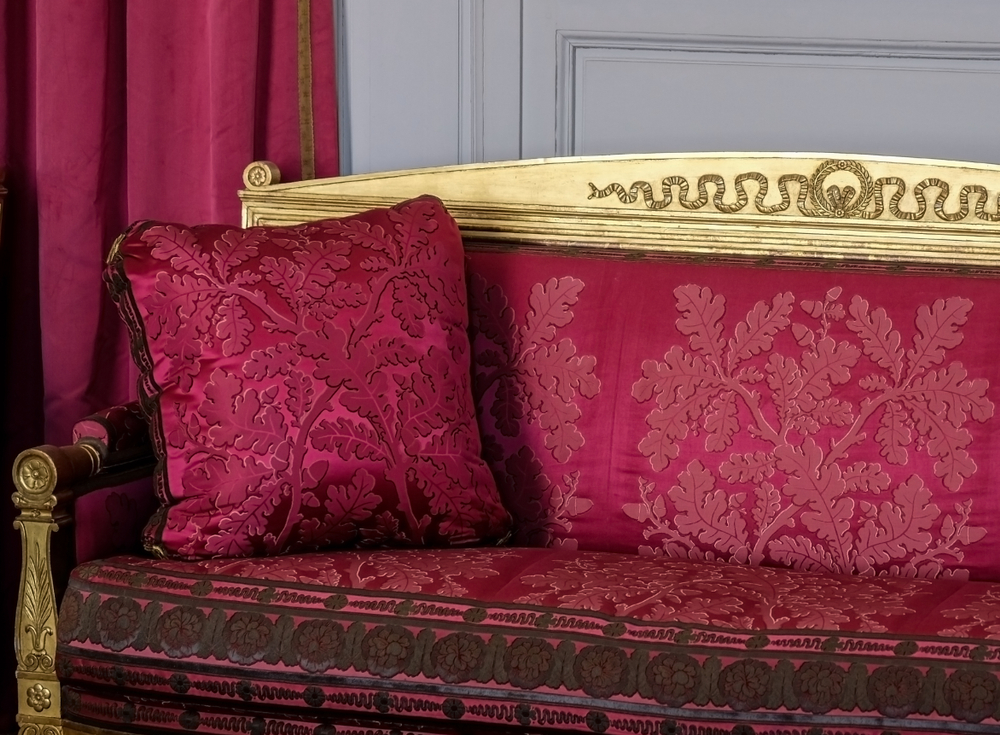
The Louis XIV Settee, created around 1680, is a long, elegant sofa made of wood and upholstered in luxurious fabrics such as velvet or silk. These settees were often placed in royal parlors and were designed for comfort and display. The carved wood frame features intricate detailing, often showcasing floral motifs and classical figures. A Louis XIV Settee can command a price between $60,000 and $200,000, depending on its condition and the richness of the upholstery.
Settees like this were designed to offer both elegance and comfort for the French aristocracy. The beauty of the settee lies in its detailed woodwork and the quality of the fabrics used. The settee is a rare and expensive piece due to its craftsmanship and association with the luxury of Louis XIV’s court. Well-maintained settees with original upholstery are particularly valuable to collectors.
Louis XIV Trumeau Mirror
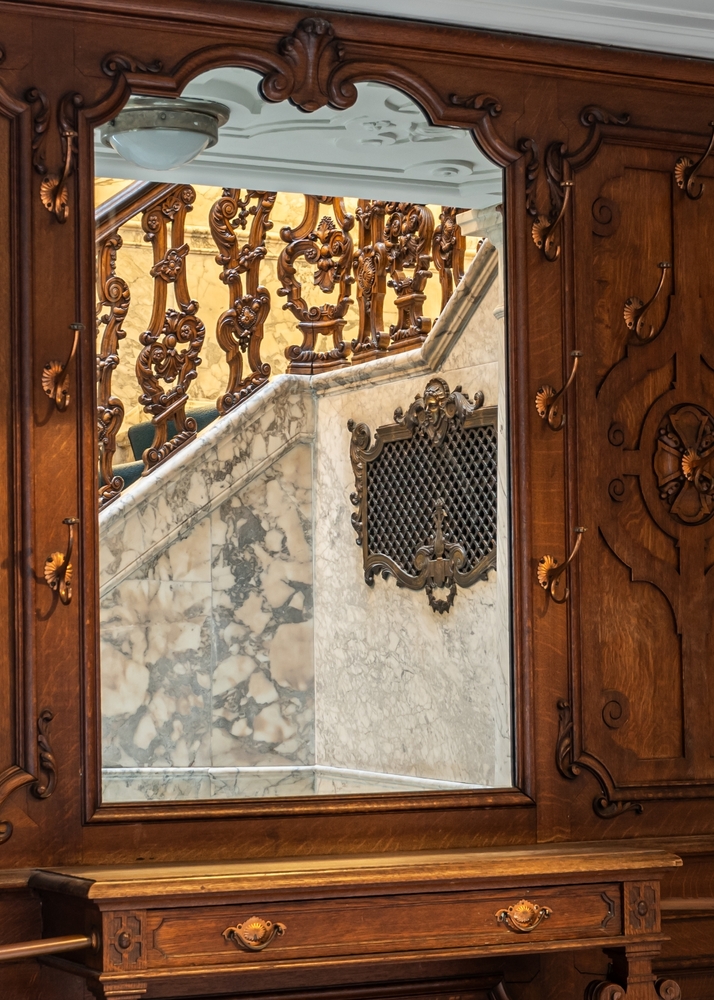
The Louis XIV Trumeau Mirror, produced around 1685, is a large and opulent mirror often framed in gilded wood. The top section of the frame typically features intricate carvings, with a mirrored panel below. The most distinctive feature of these mirrors is the ornate detailing, often featuring mythological or royal figures. Depending on size and condition, a Louis XIV Trumeau Mirror can be valued at $50,000 to $150,000.
Trumeau mirrors were often placed in grand entrances or palaces, reflecting both light and the opulence of the surrounding decor. Their size and craftsmanship make them highly sought after by collectors who appreciate the artistry of the Baroque period. The use of gilded wood and the intricate carvings contribute to the high market value of these mirrors. Restored examples in excellent condition can fetch even higher prices due to their rarity.
Louis XIV Bergere
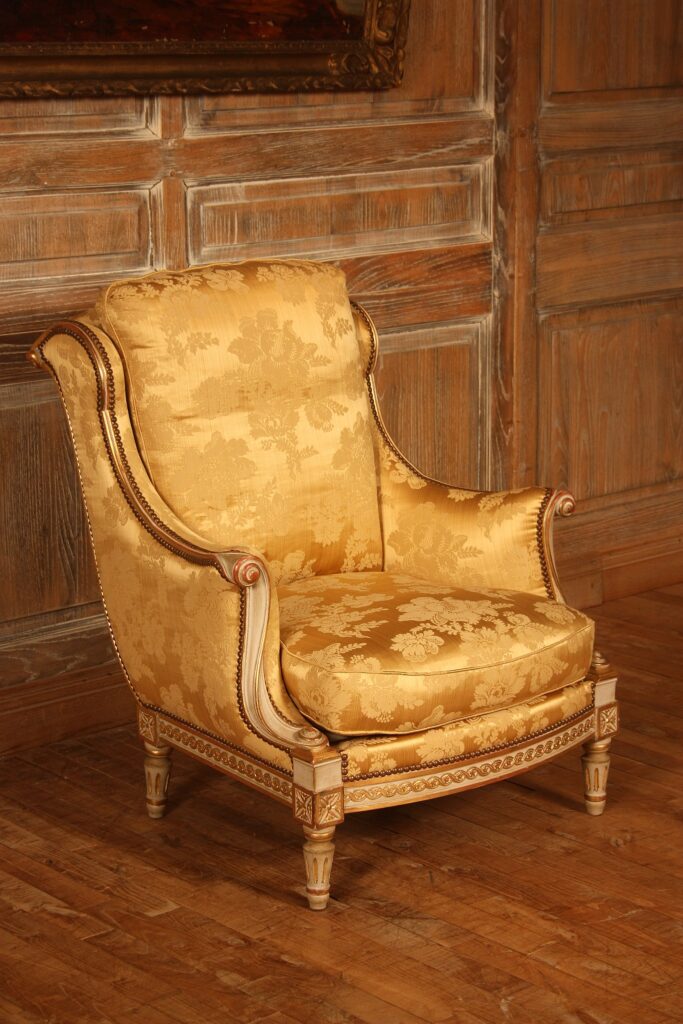
The Louis XIV Bergere, crafted around 1700, is an upholstered armchair with an ornate wooden frame and plush seating. These chairs were often used in royal parlors and were designed for both comfort and beauty. The carving on the wooden frame is intricate, often featuring floral designs and mythological figures. The market value for a Louis XIV Bergere can range from $60,000 to $250,000, depending on the upholstery and woodwork.
Bergeres were particularly popular in Louis XIV’s court, where they were used for relaxation and social gatherings. These chairs are prized for their elegant design, with richly carved wood and luxurious fabrics. As with most Louis XIV furniture, the rarity and historical significance of the piece significantly increase its value. A well-preserved Bergere can be a showpiece in any collection of antique French furniture.
Louis XIV Cabinet
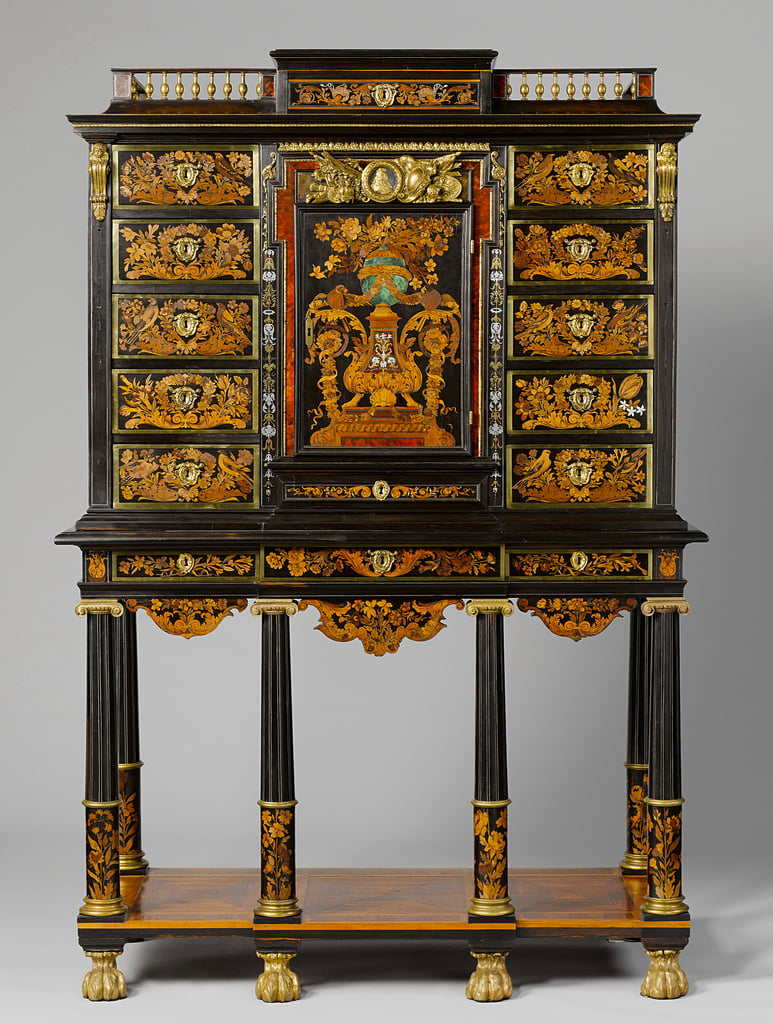
The Louis XIV Cabinet, created in the 1690s, is a highly decorative storage piece often made from walnut or oak and adorned with inlays of exotic woods. These cabinets were typically used to store fine items and were often placed in royal rooms or galleries. The detailed carvings and luxurious finish make this cabinet a standout piece. The value of a Louis XIV Cabinet can range from $50,000 to $200,000, depending on the craftsmanship and materials used.
The cabinets were often commissioned for use by the French aristocracy and are considered symbols of wealth and power. The intricate designs and high-quality materials make them rare and expensive to acquire. Cabinets like these are typically inlaid with precious stones or metals, which further contribute to their value. As with most Louis XIV furniture, the condition and originality of the piece greatly affect its market price.
These items are not only beautiful but also valuable, with many pieces continuing to increase in price over time. The historical significance and detailed craftsmanship make them desirable for collectors worldwide.
This article originally appeared on Avocadu.
